
The Best DNA and Ancestry Products Compared
What Is The Iberian Peninsula – DNA Ethnicity
- UPDATED July 2024
Upon receiving your DNA test results, utilize this comprehensive guide to delve into the intricacies of your Iberian Peninsula ancestry and gain deeper insights into its significance.
Advertising Disclosure
Many or all of the companies featured provide compensation to us. These commissions are how we maintain our free service for consumers. Compensation, along with hours of in-depth research, determines where & how companies appear on our site.
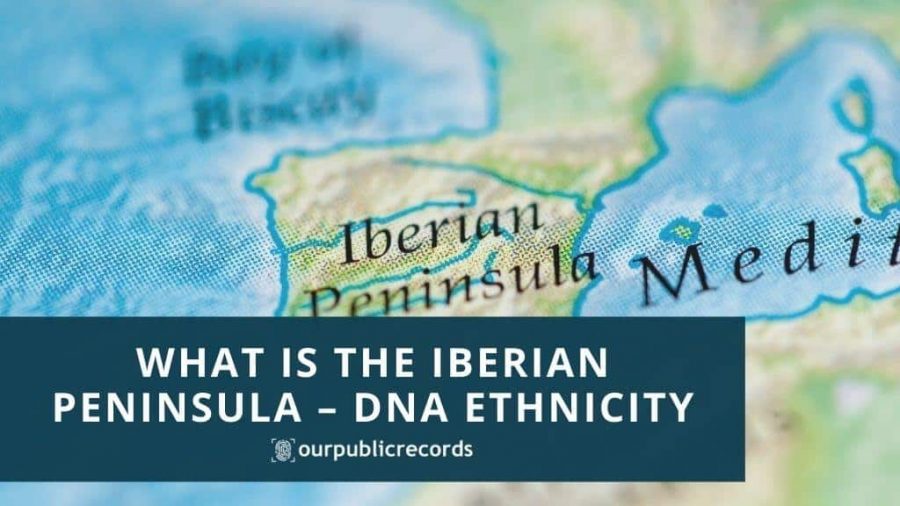
DNA Tests for Home Use
Gone are the days when DNA tests were relegated to sensational tabloid shows; today, these kits offer a gateway to unraveling your ancestral heritage. While these tests may have been popularized on shows like “Maury,” where paternity is determined, their applications have evolved. Beyond verifying biological relationships, people now seek these tests to trace their family’s journey across borders and understand their ancestral roots. The foremost player in this field is AncestryDNA, renowned for its vast repository of test results and samples. Through shared genetic markers and confirmed gene origins, these tests, including AncestryDNA, map your heritage, often showcasing regions like the Iberian Peninsula.
DNA analysis segregates your ancestry into distinct categories, each assigned a percentage reflective of your genetic alignment with individuals from those regions. Among these categories, you might encounter the Iberian Peninsula. In this article, we’ll delve into the significance of this region and explore its presence within your DNA results summary.
Home DNA tests make it easy to see where you came from and require just a small sample.
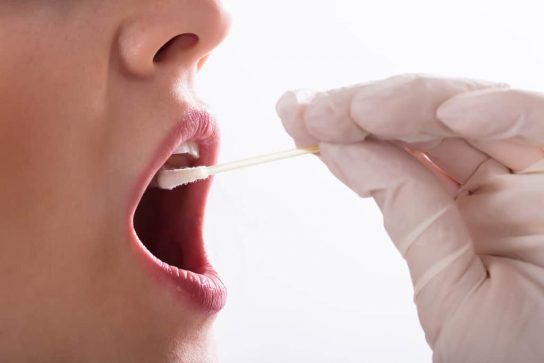
Home DNA tests make it easy to see where you came from and require just a small sample.
What is the Iberian Peninsula?
The Iberian Peninsula is the second largest peninsula in Europe and has a population of over 57 million people. Located in southwestern Europe, the Iberian Peninsula primarily encompasses territories governed by Portugal and Spain. The term “Iberian” originates from the Greek term “Iberia,” which was adopted from a parallel Latin word. The pages of ancient manuscripts and narratives depict the peninsula under the names of Hiberia and Hispania, referring to both the geographical region and its inhabitants. Archaeological findings of artifacts provide evidence of human habitation dating back at least 1.2 million years, suggesting the possibility that some of your forebears resided here in antiquity.
The Neolithic expansion of Europe around 7,000 BC prompted significant developments on the Iberian Peninsula, including the construction of stone structures and monuments by its inhabitants. The dawn of the modern civilization we recognize today began to take shape around 3,000 BC, marked by a fusion of cultures and interactions with other regions. The locales of North Africa, the Baltics, and the Middle East engaged in trade and collaborations with the local populace. Within this tapestry, a distinctive culture known as the Beaker culture emerged, known for crafting bell-shaped drinking vessels. This culture evolved further to become adept bronze workers by approximately 1800 BC, leaving behind enduring bronze artifacts that continue to stand as testament to their craftsmanship.
This satellite image gives you an idea of what the modern-day Iberian Peninsula looks like and what it includes.
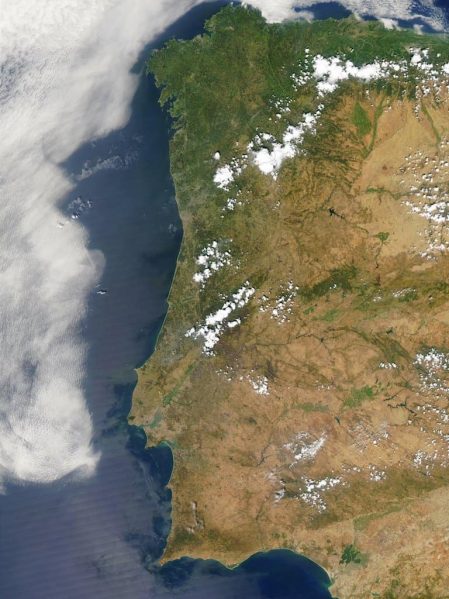
Romans and More
The Iberian Peninsula has a rich history, shaped by a succession of civilizations. Among its earliest inhabitants were the Romans, who arrived during the Second Punic War in 218 BC. The Roman Republic named this landmass Hispania and eventually partitioned it into two territories. Utilizing the region’s resources, the Romans leveraged its people to supply their republic with commodities like wine.
In the fifth century, Germanic tribes infiltrated the peninsula, eventually gaining control over specific provinces and islands. Subsequently, in the eighth century, a significant shift occurred as Muslim forces, often referred to as Moors, conquered the region, with their dominion mostly concentrated in the southern areas.
The peninsula underwent further transformations as history unfolded. A pivotal moment arose when Gothic invaders clashed with Muslim armies. In an unexpected turn, Christian soldiers joined forces with the Muslim troops, resulting in a protracted and fierce conflict. This intricate period saw the emergence of various kingdoms, including the Kingdom of Portugal and the Kingdom of Aragon.
Spanish forces valiantly battled against the Muslim occupiers, ultimately prevailing and reclaiming control over the peninsula. A significant juncture arrived from 1580 to 1640 when the Iberian Peninsula was united under the rule of the Kingdom of Portugal and the Kingdom of Spain. However, the 17th century saw a divergence between these two nations, leading to a partition of the peninsula.
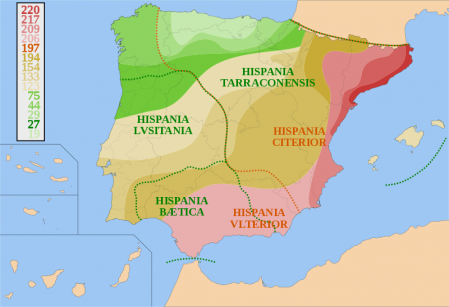
Romans were the first group to invade the Iberian Peninsula and renamed many of the regions.
Why Would a DNA Test Show Iberian Peninsula Roots
Embarking on a DNA test and receiving results reflecting the Iberian Peninsula connection places you among a significant group. This region, often referred to as a crossroads by archaeologists, holds historical significance as a convergence of diverse cultures and communities. Over three millennia ago, this land boasted ports facilitating trade between locals and individuals from around the globe, fostering encounters with novel experiences and goods.
Muslims and North Africans subsequently established their presence here, exerting control over many areas until yielding to the ascendancy of Christian conquerors. Your DNA outcomes might reveal a proportion of Iberian Peninsula ancestry, reflective of the coexistence of your Muslim, African, Germanic, or European forebears within this multifaceted domain.
In the late 2010s, scientists initiated DNA analysis of skeletons hailing from the Iberian Peninsula. This endeavor unveiled more than 400 genomes—surpassing counts found in other regions’ skeletons. In parallel studies, the uniqueness of eight genomes was detected in Japan, while over 170 were identified in the UK. An illuminating discovery came in 2010 when a female skeleton, uncovered in an ice cave within the Iberian Peninsula, revealed genes from both European hunting and gathering groups. Current understanding posits that the Goyets of Belgium migrated to the peninsula during the Ice Age, followed by the influx of others from Italy approximately 14,000 years ago.
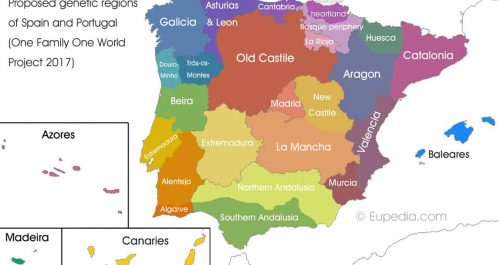
Your DNA results may include one or more of the genetic regions now found in the Iberian Peninsula.
Why AncestryDNA is the Best Choice for Iberian Ancestry
Throughout the ages, the Iberian Peninsula has been inhabited by millions, making it unsurprising that many users of DNA test kits discover ancestral connections to this region. Prominent kits such as those offered by 23andMe and Family Tree DNA often indicate a percentage of Iberian Ancestry within one’s DNA. This can complicate research, leaving individuals uncertain about the origin of their ancestors—whether they hailed from this region or other areas.
AncestryDNA distinguishes itself as one of the few tests on the market that meticulously dissects genetic makeup across distinct segments of the peninsula, it includes:
- Spain
- Portugal
- Basque
Another compelling reason to opt for this test is its evolving nature. Initial test-takers received results that consolidated all Iberian Peninsula genes under one category. Recent logins have unveiled a more refined approach, attributing percentages to the three primary regions within the peninsula. With an expanding user base and a growing database, AncestryDNA is poised to enhance its precision in tracing ancestral roots and intricate ties to the Iberian Peninsula.
- Large database with over 22 million users
- Results come back in under eight weeks
- Includes options for building a family tree online
- Allows you to register online and view your DNA matches
- Offers a subscription service that gives full access to genealogical research materials and records
- Features more regions in the Iberian Peninsula than most other tests do
But I'm Not Spanish!
A common reason why individuals turn to the internet to search for information about the Iberian Peninsula’s connection to DNA is the instant sense of surprise they experience when receiving their DNA test results. It’s not uncommon for someone to react this way because the results might not indicate a direct Spanish lineage. This reaction can arise when someone is aware of their diverse heritage, like having one side of their family originating from Africa and the other from Europe, before eventually settling in the United States.
The Iberian Peninsula DNA identified by these tests can encompass areas both within and around the peninsula, spanning regions adjacent to Portugal and Spain. Remarkably, even if your family roots trace back to southern Europe or northern Africa, your test results could still reveal Iberian Peninsula DNA. In fact, these tests might detect such DNA even if your ancestors hailed from countries like Italy, France, Algeria, and Morocco.
It’s also crucial to note that even individuals native to the Iberian Peninsula itself do not possess a purely 100% Iberian genetic makeup. An insightful study uncovered that residents of the region possess an average of 51% Iberian genes. The remaining genetic composition stems from ancestors who migrated there from various corners of the world. This group encompasses individuals who journeyed to the Peninsula to marry, soldiers who settled post-battles, and those who migrated southward to escape the harsh conditions of the Ice Age. This fascinating mosaic of genetic heritage underscores the diversity and complexity of human migration and settlement over time.
What Other Ancestry Do Iberian Natives Have?
Those native to the Iberian Peninsula may have genes from other regions and countries too, including:
- Great Britain
- Ireland
- Western European
- North African
- French
- Southern European
Who is Most Likely to Have Iberian Peninsula DNA?
Exploring the Iberian Peninsula’s link to your DNA results raises questions about the potential shared genetic heritage among others. Certain regions and specific criteria heighten the likelihood of possessing this DNA. Your Iberian Peninsula DNA might be influenced if you:
- Have Italian roots through grandparents or great-grandparents.
- Trace your lineage to a parent or grandparent from Mexico or other Latin American countries.
- Observe Irish or Great British ancestry in your family tree.
For those with genetics pointing to ancestors affiliated with Native American tribes once residing in southwestern Kentucky, uncovering relatives online becomes feasible. Shared genes are inherent among everyone from that region and tribe. This principle extends universally to any region.
Historically, during colonial times, a substantial influx of migrants from Ireland and Great Britain journeyed to the Iberian Peninsula. This migration resulted in the presence of markers tied to the peninsula within DNA, persisting even if your ancestors moved away generations ago. British individuals arriving in America during the Revolutionary War and subsequent years potentially imparted their Iberian Peninsula DNA markers to successive generations.
How Can You Tell if You Have Iberian Ancestry Without Taking a DNA Test?
Taking a DNA test is the only way you can prove that you have Iberian ancestry, but your chances of having that ancestry increases if your family came from the following regions:
- Portugal
- France
- Spain
- Latin America
- Great Britain
- Italy
Iberian and British Ancestry
AncestryDNA and similar testing platforms intricately divide Great Britain into encompassing regions such as the United Kingdom, Scotland, and Ireland. It’s important to note that the UK classification generally incorporates any Welsh ancestry in your genetic makeup as well.
A compelling theory crafted by genealogists sheds light on the intriguing connection between British and Iberian ancestries. This theory suggests that during ancient times, a group of individuals residing in the Iberian Peninsula migrated to Great Britain. Motivations could range from escaping violent conflicts to disapproval of emerging rulers. If your lineage traces back to the UK, it’s plausible that a share of your genetic heritage carries Iberian origins.
Another hypothesis posits that Iberian people intermingled with British populations as they ventured southward to partake in battles. This interaction potentially extends to other ancestries within your DNA, indicating that your ancestors formed unions with individuals outside their immediate region. The early eras of European history saw the Iberian Peninsula play a pivotal role in trade routes, attracting individuals who might have initially come for supplies yet eventually established homes due to personal connections or affections.
Insider Tip
If you have Iberian Peninsula ancestry and want to learn more, you can contact the Catholic Church found in different regions. They often maintain records and can give you information about your family as long as you have a name and possibly a date of birth.
If you have Iberian Peninsula ancestry and want to learn more, you can contact the Catholic Church
What Do Your Percentages Mean?
When reviewing the outcomes of a DNA test, you’ll come across listed regions or areas, each accompanied by a corresponding percentage. Summing up these percentages yields a comprehensive total of 100. It’s vital to recognize that no individual worldwide is entirely 100% of any specific ancestry. Even those born and raised within a Native American reservation won’t exhibit 100% ancestry. The distribution of your percentages is significantly influenced by when your family immigrated to the United States and the duration of their residence there.
Notably, Native American tribes offer distinct programs and advantages to individuals capable of substantiating their tribal membership. These benefits range from casino earnings to educational scholarships. If you possess a parent or grandparent with a verified 100% Native American heritage, the process of confirming your ancestry is likely streamlined.
In terms of Iberian Peninsula ancestry, your results might unveil commonalities as minimal as one or two percent, or as substantial as 20% or more, with individuals from that region. A result below 10% often suggests that someone within your family tree lived on the peninsula at least five generations ago, possibly tracing back hundreds of years. If your percentage rises to 20% or beyond, it signifies that at least one of your grandparents was a resident of the Iberian Peninsula.
WARNING
If both sides of your family tree have ancestors from the Iberian Peninsula, your percentage will be much higher. This does not necessarily indicate that your family lived there recently, but can show that you still have family there.
Where Did Your Iberian Peninsula Ancestry Go?
Many individuals eagerly anticipate sharing their DNA test results, excitedly discussing their ancestral origins and online connections with friends and loved ones. As the system accumulates more samples, your outcomes might evolve. For instance, your initial 10% Irish and Scottish could shift to 5% Irish over time. In the context of the Iberian Peninsula, early test-takers often observed high percentages of this ancestry, only to witness the figures decrease later on. This might lead you to log in and discover the absence of Iberian Peninsula ancestry, prompting questions about its whereabouts.
AncestryDNA users receive notifications whenever the site updates their DNA percentages. Navigating to the bottom of the page allows you to juxtapose your original estimates with the current ones that have changed. This phenomenon frequently arises because the system initially identified what it thought was Iberian Peninsula ancestry, which later revealed itself as Spanish or Portuguese heritage. While you inherit half of your genes from each parent, certain genes from their parents and grandparents can be more pronounced in your genetic makeup. Consequently, as updates occur, the test may recognize that your genetic markers are more aligned with people from different areas, leading to the diminishing presence of peninsula-related genes.

You can compare the haplogroups on your father's side to this chart to see the regions where your male line once lived.
Mitochondrial vs. Y-Chromosome Testing
DNA tests analyze either your y-chromosomes or mitochondrial DNA to determine your ancestry. While certain tests may provide both options, performing two rounds of testing usually incurs an additional charge. Your mitochondrial DNA originates from your mother and the preceding generations of females in her family. Whether you’re a son or daughter, you can choose this testing method. On the other hand, y-chromosome testing is exclusive to sons, as it examines the genes fathers pass to their sons and subsequently to their male descendants.
Observing the image/map above, you’ll notice the male haplogroups prevalent across the Iberian Peninsula. Haplogroups denote genetic markers present within a specific group of individuals. This term applies both to individuals within a broader group and to groups residing in particular regions at different times. Exploring your haplogroups can provide insights into when your ancestors inhabited northern or southern Spain and when they migrated to Portugal or other areas like the Baltic Sea. Many DNA tests allow you to examine haplogroups at different points, unveiling the migration patterns of your forebears.
- Aragon
- Castile
- Ibiza
- Seville
- Leon
- Valencia
- Basque
What to Do with Your DNA Results
Check for linked connections
Whichever DNA test you opt for, an exciting opportunity awaits: connecting with individuals who share your genetic heritage and have taken the same test. AncestryDNA goes the extra mile by listing those possessing similar genetic markers and illustrating how you are related to them. This could lead you to discover siblings, half-siblings, aunts, uncles, grandparents, as well as second, third, or fourth cousins.
Use other sites
Every ancestry DNA test provides the option to download your raw data. Instead of storing this data on your computer as a zipped file, consider uploading it to other platforms. Notably, MyHeritage is among the sites that accept raw data from 23andMe and AncestryDNA. Upon uploading, it may take a few weeks for the site to complete the comparison with other samples.
Upload to GEDmatch
GEDmatch simplifies connections among individuals with shared genetic traits. This free service welcomes raw data from most DNA tests. Creating an account and uploading your data takes mere minutes, though it could take days or weeks for the site’s full array of features to become available to you. GEDmatch also offers a forum for inquiries and a premium package at a monthly cost of $10.
How to Do a Saliva Sample DNA Test
The sole means of substantiating Iberian ancestry lies in undergoing a DNA test, and your likelihood of possessing this heritage is enhanced if your family originated from the subsequent areas:
- Thoroughly review the instructions to ensure you comprehend the test's completion and submission process.
- Collect a saliva sample upon waking up in the morning.
- Gather the saliva in your mouth, then gently expel it into the provided sample container, ensuring it reaches the designated fill line.
- Seal the container by affixing the lid, either by pressing it down or turning it.
- Place your sample into the enclosed box and proceed to mail it.

How to Find Out More About Your Iberian Ancestry
One Family One World Initiative
Eupedia and Living DNA collaborated to launch the One Family One World initiative, serving as a means to uncover Iberian Peninsula heritage. Even if you haven’t undergone the Living DNA test, you retain the opportunity to upload your data to this project. It excels in tracing your lineage to specific regions, encompassing Old Castile, Beira, Catalonia, and Valencia.
The FamilyTree DNA Project for Iberian Ancestry
FamilyTree DNA stands as another prominent DNA testing company that offers a dedicated project for individuals with Iberian ancestry. With over 4,000 members, the project encourages participants to share geographic and cultural insights about their families. This endeavor proves invaluable for forging connections with potential family members who share similar heritage.
Leverage Ancestry.com Forums
The Ancestry.com forums provide a wealth of information for those seeking insights into Iberian ancestry. While accessible exclusively to registered members, the platform extends a free seven-day trial, granting full access to all features. Within these forums, you’ll discover discussions and groups comprising individuals with Iberian DNA. Additionally, you can pose questions about your family name or seek connections to individuals who might fit within your family tree.
Iberian People are All Around the World
If you were adopted as a child, your memories of your biological parents might be nonexistent. Prior to marriage or having children, it’s essential to ascertain their identity to address potential medical concerns or harmful genes that could be inherited by your offspring. However, the utility of DNA tests extends beyond adoption. They can also unveil information about absent fathers, unspoken-of grandparents, or unfamiliar branches of your family tree.
Through AncestryDNA and other leading DNA tests, a strong likelihood exists of discovering Iberian Peninsula ancestry if your parents or grandparents hail from Spanish, British, Portuguese, Italian, or French backgrounds. This expansive region encompasses portions of Spain and Portugal, along with certain surrounding islands. Ancestral presence in this area could be attributed to trade interactions or migration during the Ice Age. The degree of this ancestry can fluctuate based on the proximity of your closest relatives to the region, as well as whether it’s present on both sides or just one of your lineage. DNA tests offer insights into your Iberian lineage and the extent to which your genes are tied to this peninsula.


